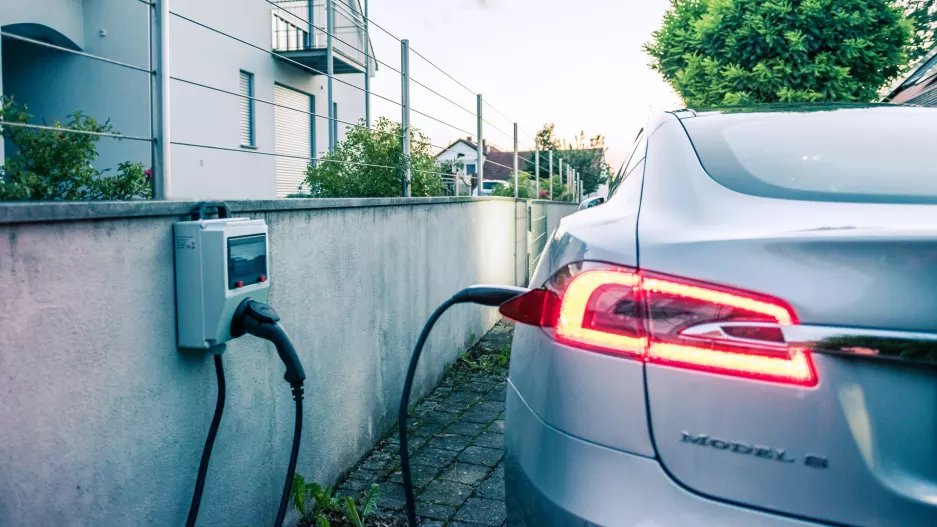
Date: 2024-12-21 Page is: DBtxt003.php txt00014544
Energy / Transportation
Private Car ... Electricity -v- Gas
WORLD CHANGING IDEAS ... Owning An Electric Car Is Twice As Cheap As Owning A Gas Vehicle ... Want to save money? Stop paying for gas.
Burgess COMMENTARY
Peter Burgess
WORLD CHANGING IDEAS
Owning An Electric Car Is Twice As Cheap As Owning A Gas Vehicle
Want to save money? Stop paying for gas.

[Photo: Flickr user Jakob Härter]
Owning An Electric Car Is Twice As Cheap As Owning A Gas Vehicle
Electric cars are generally more expensive to buy than conventional vehicles. The suggested retail price for a 2018 Nissan Leaf, the world’s best selling EV, is about $30,000 in the U.S. You can pick up a new Honda Civic 2018 for less than $19,000 (though this excludes the still-available federal tax credit for new EVs, worth $7,500).
But running an EV is almost always cheaper–sometimes dramatically so. A new analysis shows EV costs are on average 2.3 times lower than for gasoline vehicles nationally, though the numbers vary a lot state to state. In Washington and Oregon, where electricity is relatively cheap, EV drivers have a third of the energy costs of conventional drivers.
The analysis comes from the University of Michigan’s Transportation Research Institute. It bases its figures on average electricity and gasoline prices in all 50 states at the end of 2017, plus the average fuel economy and electricity consumption of conventional and electric vehicles. It assumes a driving distance about 11,500 miles a year–the national average in 2015.

[Photo: Flickr user mariordo59]
Drivers in Hawaii pay the most for gasoline ($1,509 a year), followed by Alaska ($1,434), California ($1,407), Washington ($1,338), and Oregon ($1,274). Motorists in Alabama, Texas, Mississippi, Arkansas, and South Carolina pay the least–all about $1,000 a year to cover the average driving distance.
EVs are cheapest to run in Louisiana ($367), followed by Washington ($372), Arkansas ($382), Idaho ($390), and Tennessee ($398). Hawaii ($1,106), Alaska ($833), Connecticut ($804), New Hampshire ($751), and Rhode Island ($737) have the highest electricity costs.
The report’s authors, Michael Sivak and Brandon Schoettle, also calculated the average fuel economy rate that conventional vehicles would need to reach to match EVs in each state. In Washington and Oregon, a gasoline car would need to go as high as 90 MPG and 77 MPG to make up the cost difference. Miles per gallon would need to be higher than 50 in 39 states. Under federal CAFE rules, new cars must exceed 45 MPG; the current national average for all cars, new and old, is about 25 MPG.
Of course, price is not the only consideration in whether to switch to electric, with vehicle range and driving experience often cited as barriers. But with battery prices falling all the time, range anxiety often more imaginary than justified, and many manufacturers announcing big electric car plans, such worries may soon be a thing of the past.
ABOUT THE AUTHOR
Ben Schiller is a New York staff writer for Fast Company. Previously, he edited a European management magazine and was a reporter in San Francisco, Prague, and Brussels. More